Estimation Accuracy of the Electric Field in Cable Insulation Based on Space Charge Measurement
Abstract
:1. Introduction
2. Methodology for Accuracy Evaluation
2.1. Basic Concept
- The accuracy evaluation is performed for field distributions estimated from waveform analyses. The field calculated for a coaxial cable using the Laplace equation is considered a reference for comparison.
- The aforementioned accuracy evaluation provides the maximum error range of the analysis because higher DC voltages provide improved signal-to-noise ratios in the waveform.
- The optimum IR of the system can be observed in the waveforms obtained under the VL condition. This provides an optimum analysis close to the Laplace field for waveforms observed under both VL and VH conditions.
2.2. Evaluation Flowchart
3. Experimental Procedure
4. Results and Discussion
4.1. Optimization of Deconvolution Parameters (The First Stage of the Evaluation)
4.2. Accuracy Evaluation for VL Data (The Second Stage of the Evaluation)
4.3. Accuracy Evaluation for VH Data (The Third Stage of the Evaluation)
4.4. Accuracy Evaluation in Various IRs
5. Conclusions
Author Contributions
Funding
Institutional Review Board Statement
Informed Consent Statement
Data Availability Statement
Acknowledgments
Conflicts of Interest
Appendix A
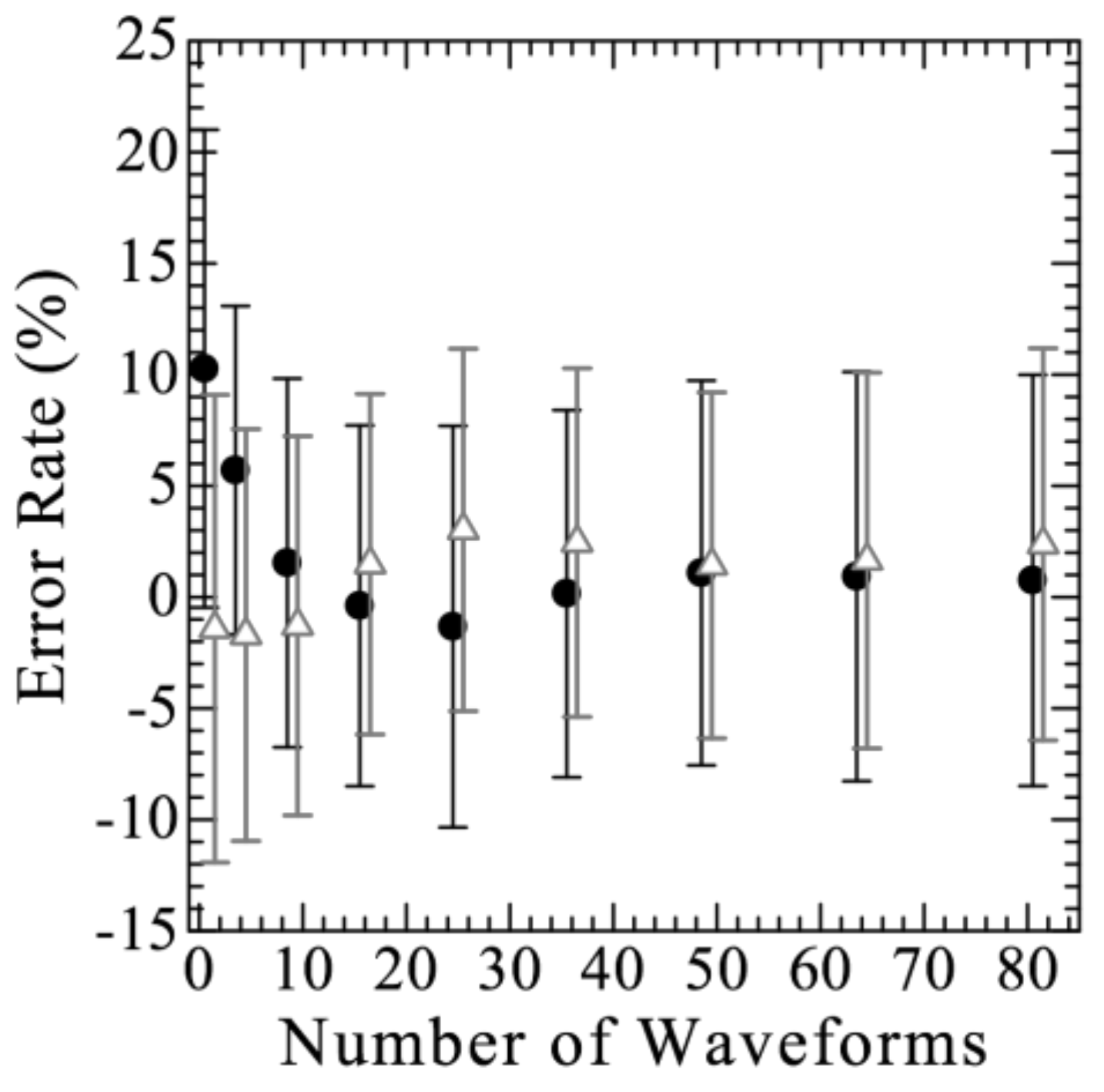
References
- U.S. Energy Information Administration. Assessing HVDC Transmission for Impacts of Non-Dispatchable Generation. Available online: https://www.eia.gov/analysis/studies/electricity/hvdctransmission/ (accessed on 31 May 2022).
- Fukagawa, H.; Miyauchi, H.; Yamada, Y.; Yoshida, S.; Ando, N. Insulation properties of 250 kV DC XLPE cables. IEEE Trans. Power Appar. Syst. 1981, 100, 3175–3184. [Google Scholar] [CrossRef]
- Ando, N.; Numajiri, N. Experimental investigation of space charge in XLPE cable using dust figure. IEEE Trans. Electr. Insul. 1979, 14, 36–43. [Google Scholar] [CrossRef]
- CIGRE. Recommendations for Testing DC Extruded Cable Systems for Power Transmission at a Rated Voltage up to 500 kV; CIGRE Technical Brochure 496; CIGRE: Paris, France, 2012. [Google Scholar]
- Mazzant, G.I.; Marzinotto, M.; Castellon, J.; Chen, G.; Fothergill, J.; Fu, M.; Hozumi, N.; Lee, J.-H.; Li, J.; Mauseth, F.; et al. IEEE Recommended Practice for Space Charge Measurements on High-Voltage Direct-Current Extruded Cables for Rated Voltages up to 550 kV; IEEE Std. 1732; IEEE Dielectrics and Electrical Insulation Society: New York, NY, USA, 2017. [Google Scholar] [CrossRef]
- CIGRE. Recommendations for Testing DC Extruded Cable Systems for Power Transmission at a Rated Voltage Up to and Including 800 kV; CIGRE Technical Brochure 852; CIGRE: Paris, France, 2021. [Google Scholar]
- Albertini, M.; Franchi Bononi, S.; Giannini, S.; Mazzanti, G.; Guerrini, N. Testing challenges in the development of innovative extruded insulation for HVDC cables. IEEE Electr. Insul. Mag. 2021, 37, 21–32. [Google Scholar] [CrossRef]
- Mazzanti, G.; Marzinotto, M. Extruded Cables for High-Voltage Direct-Current Transmission: Advances in Research and Development; Wiley-IEEE Press: Hoboken, NJ, USA, 2013. [Google Scholar]
- Du, B. (Ed.) Polymer Insulation Applied for HVDC Transmission; Springer: Singapore, 2021. [Google Scholar]
- Huang, X.; Tanaka, T. (Eds.) Polymer Composites for Electrical Engineering; Wiley-IEEE Press: Hoboken, NJ, USA, 2021. [Google Scholar]
- Thabet, A.M. Emerging Nanotechnology Applications in Electrical Engineering. IGI Global: Hershey, PA, USA, 2021. [Google Scholar]
- Yamanaka, T.; Maruyama, S.; Tanaka, T. The development of DC+/−500 kV XLPE cable in consideration of the space charge accumulation. In Proceedings of the 7th International Conference on Properties and Applications of Dielectric Materials, Nagoya, Japan, 1–5 June 2003; pp. 689–694. [Google Scholar] [CrossRef]
- Igi, T.; Mashio, S.; Sakamaki, M.; Kazama, T.; Sasaki, K.; Nishikawa, S. System performance and demonstration of 400 kV–525 kV DC-XLPE cable and accessories. In Proceedings of the International Symposium on HVDC Cable Systems, Dunkirk, France, 8–10 November 2017. [Google Scholar]
- Morita, S.; Fuse, N.; Takahashi, T.; Matsubara, T.; Murata, Y.; Zahra, S.; Hozumi, N. Space charge measurement of full-size 23-mm-thick XLPE cables in load cycle condition. In Proceedings of the Jicable HVDC ’21: International Symposium on HVDC Cable Systems, Liege, Belgium, 8–10 November 2021. [Google Scholar]
- IEC TS 62758; Calibration of Space Charge Measuring Equipment Based on the Pulsed Electro-Acoustic (PEA) Measurement Principle. International Electrotechnical Commission: Geneva, Switzerland, 2012.
- Hozumi, N.; Prastika, E.B.; Zahra, S.; Kawashima, T.; Murakami, Y. Dual-domain deconvolution process applied to time-resolved quantitative dielectric measurement. In Proceedings of the IEEE 3rd International Conference on Dielectrics, Virtual, 5–31 July 2020; pp. 347–350. [Google Scholar] [CrossRef]
- Gugliotta, L.M.; Vega, J.R.; Meira, G.R. Instrumental broadening correction in size exclusion chromatography. Comparison of several deconvolution techniques. J. Liq. Chromatogr. 1990, 13, 1671–1708. [Google Scholar] [CrossRef]
- Bányász, Á.; Keszei, E. Model-free deconvolution of femtosecond kinetic data. J. Phys. Chem. A 2006, 110, 6192–6207. [Google Scholar] [CrossRef] [PubMed] [Green Version]
- Norcross, S.G.; Soulodre, G.A.; Lavoie, M.C. Subjective investigations of inverse filtering. J. Audio Eng. Soc. 2004, 52, 1003–1028. [Google Scholar]
- Bloss, P.; Reggi, A.S. Application of the regularization technique to the deconvolution of thermal pulse data. In Proceedings of the 9th International Symposium on Electrets, Shanghai, China, 27 September 1996; pp. 171–176. [Google Scholar] [CrossRef]
- Hu, L.; Zhang, Y.; Zheng, F. Novel numerical methods for measuring distributions of space charge and electric field in solid dielectrics with deconvolution algorithm. IEEE Trans. Dielectr. Electr. Insul. 2005, 12, 809–814. [Google Scholar] [CrossRef]
- Vissouvanadin, B.; Vu, T.T.N.; Berquez, L.; Roy, S.; Teyssèdre, G.; Laurent, C. Deconvolution techniques for space charge recovery using pulsed electroacoustic method in coaxial geometry. IEEE Trans. Dielectr. Electr. Insul. 2014, 21, 821–828. [Google Scholar] [CrossRef]
- Gupta, A.; Reddy, C.C. On the estimation of actual space charge using pulsed electro-acoustic system. IEEE Trans. Dielectr. Electr. Insul. 2016, 23, 3086–3093. [Google Scholar] [CrossRef]
- Liu, R.; Takada, T.; Takasu, N. Pulsed electro-acoustic method for measurement of space charge distribution in power cables under both dc and ac electric fields. J. Phys. D Appl. Phys. 1993, 26, 986–993. [Google Scholar] [CrossRef]
- Li, Y.; Aihara, M.; Murata, K.; Tanaka, Y.; Takada, T. Space charge measurement in thick dielectric materials by pulsed electroacoustic method. Rev. Sci. Instrum. 1995, 66, 3909–3916. [Google Scholar] [CrossRef]
- Nagashima, K.; Tanaka, Y.; Takada, T.; Qin, X. Effect of cylindrical function on measurement of space charge distribution in coaxial cable insulator using PEA method. IEEJ Trans. Power Energy 1999, 119, 853–860. [Google Scholar] [CrossRef] [Green Version]
- Wang, H.; Wu, K.; Zhu, Q.; Wang, X. Recovery algorithm for space charge waveform under temperature gradient in PEA method. IEEE Trans. Dielectr. Electr. Insul. 2015, 22, 1213–1219. [Google Scholar] [CrossRef]
- Morita, S.; Kawashima, T.; Murakami, Y.; Hozumi, N. Study on correction method of signal distortion under temperature gradient for space charge measurement of HVDC cables. IEEJ Trans. Power Energy 2020, 140, 271–276. [Google Scholar] [CrossRef]
- Tikhonov, A.N. On the stability of inverse problems. Computes Rendus (Doklady) de l’Academie des Sciences de l’URSS 1943, 39, 176–179. [Google Scholar]
- Hansen, P.C. Analysis of discrete ill-posed problems by means of the L-curve. Soc. Ind. Appl. Math. Rev. 1992, 34, 561–580. [Google Scholar] [CrossRef]
- Maeno, T.; Kushibe, H.; Takada, T. Pulsed electro-acoustic method for the measurement of volume charges in e-beam irradiated PMMA. In Proceedings of the Conference on Electrical Insulation & Dielectric Phenomena, New York, NY, USA, 20–24 October 1985; pp. 389–397. [Google Scholar] [CrossRef]
- Li, Y.; Takada, T. Progress in space charge measurement of solid insulating materials in Japan. IEEE Electr. Insul. Mag. 1994, 10, 16–28. [Google Scholar] [CrossRef]
- Fukunaga, K.; Miyata, H.; Sugimori, M.; Takada, T. Measurement of charge distribution in the insulation of cables using pulsed electroacoustic method. IEEJ Trans. Fundam. Mater. 1990, 110, 647–648. [Google Scholar] [CrossRef] [Green Version]
- Hozumi, N.; Okamoto, T.; Imajo, T. Space charge distribution measurement in a long size XLPE cable using the pulsed electroacoustic method. In Proceedings of the Conference Record of the 1992 IEEE International Symposium on Electrical Insulation, Baltimore, MD, USA, 7–10 June 1992; pp. 294–297. [Google Scholar] [CrossRef]
- CIGRE. Guide for Space Charge Measurements in Dielectrics and Insulating Materials; CIGRE Technical Brochure 288; CIGRE: Paris, France, 2006. [Google Scholar]
- Zahra, S.; Morita, S.; Utagawa, M.; Kawashima, T.; Murakami, Y.; Hozumi, N.; Morshuis, P.; Cho, Y.; Kim, Y. Space charge measurement equipment for full-scale HVDC cables using electrically insulating polymeric acoustic coupler. IEEE Trans. Dielectr. Electr. Insul. 2022, 29, 1053–1061. [Google Scholar] [CrossRef]
- Chen, G.; Chong, Y.L.; Fu, M. Calibration of the pulsed electroacoustic technique in the presence of trapped charge. Meas. Sci. Technol. 2006, 17, 1974–1980. [Google Scholar] [CrossRef] [Green Version]



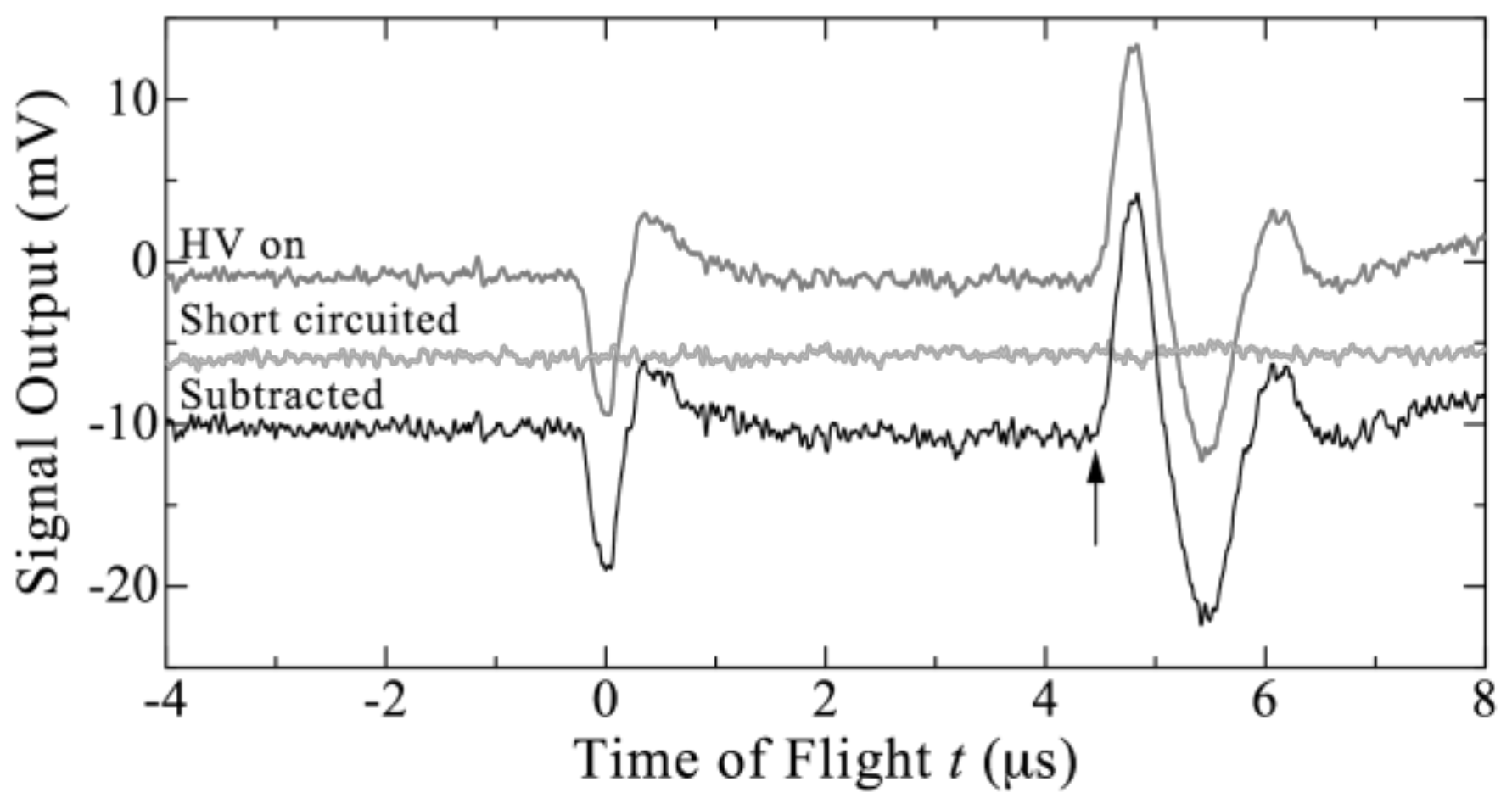
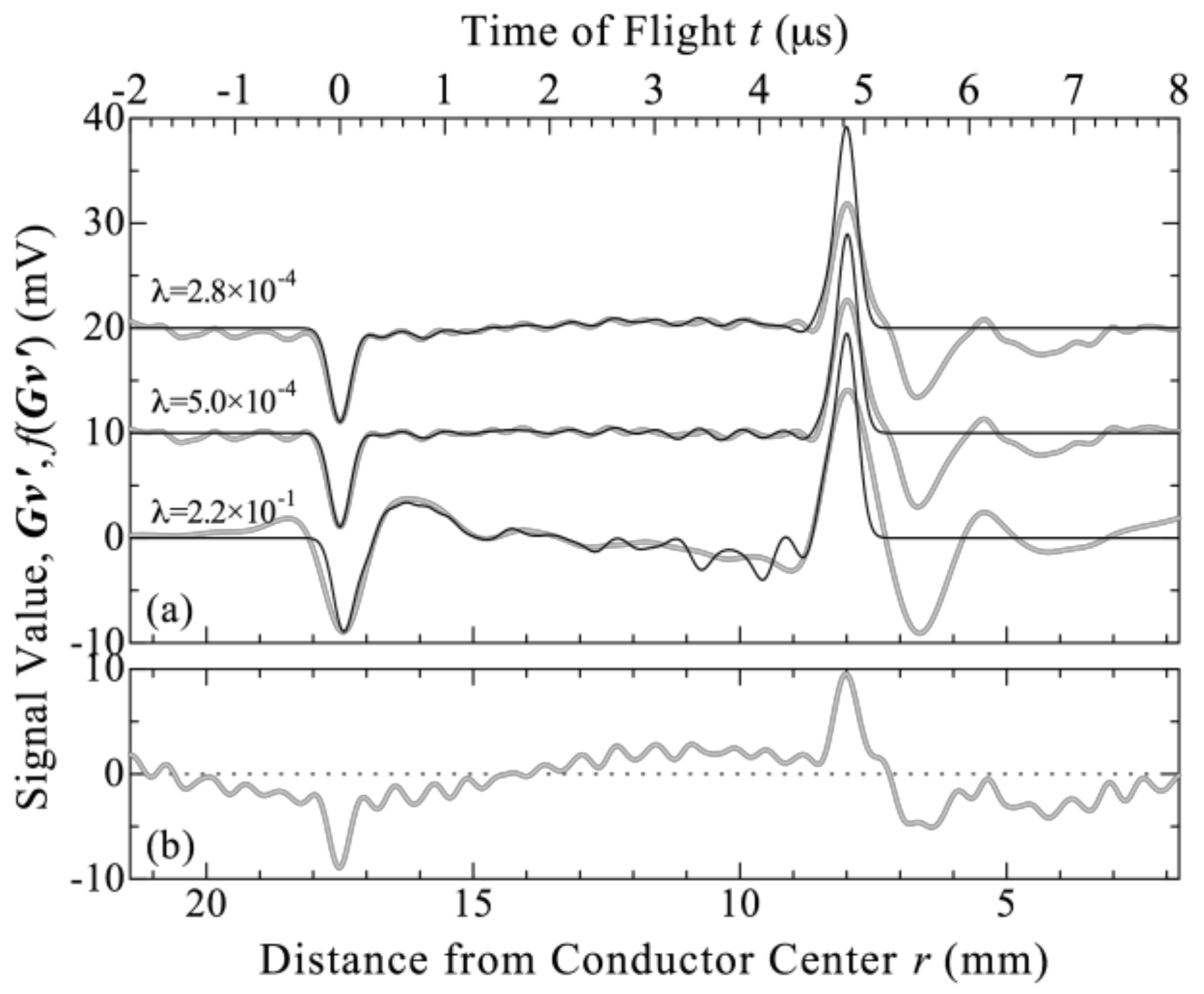

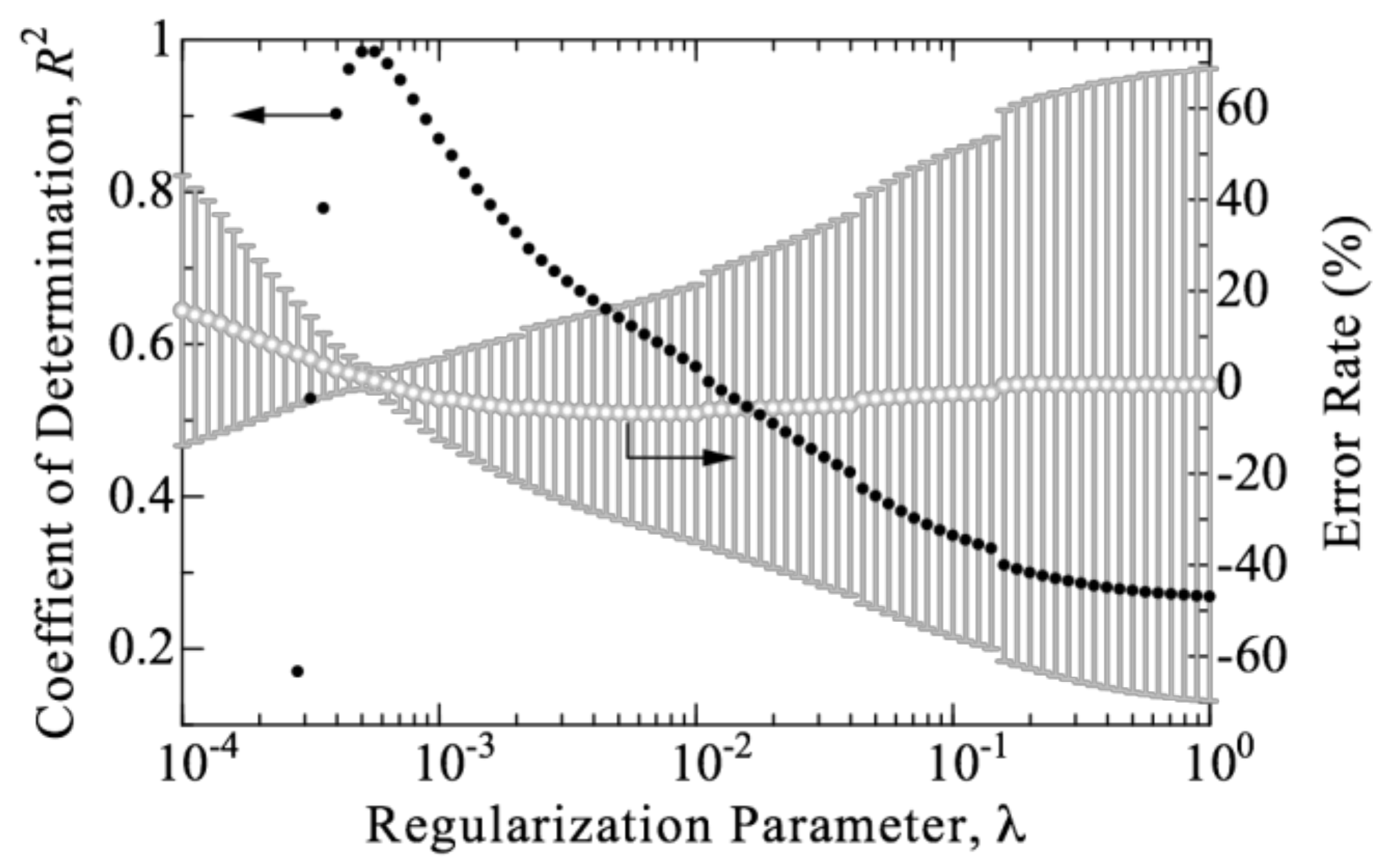

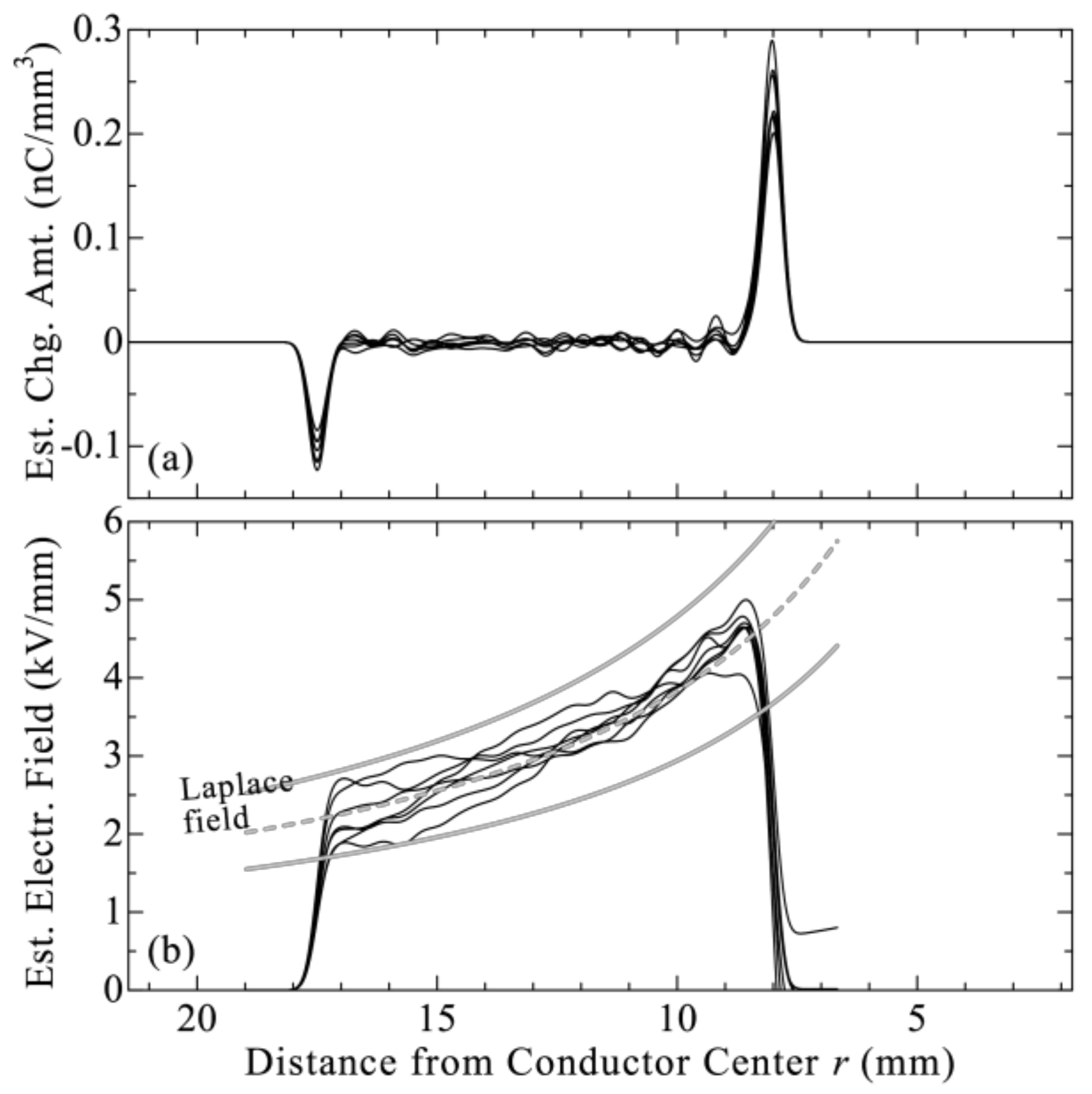
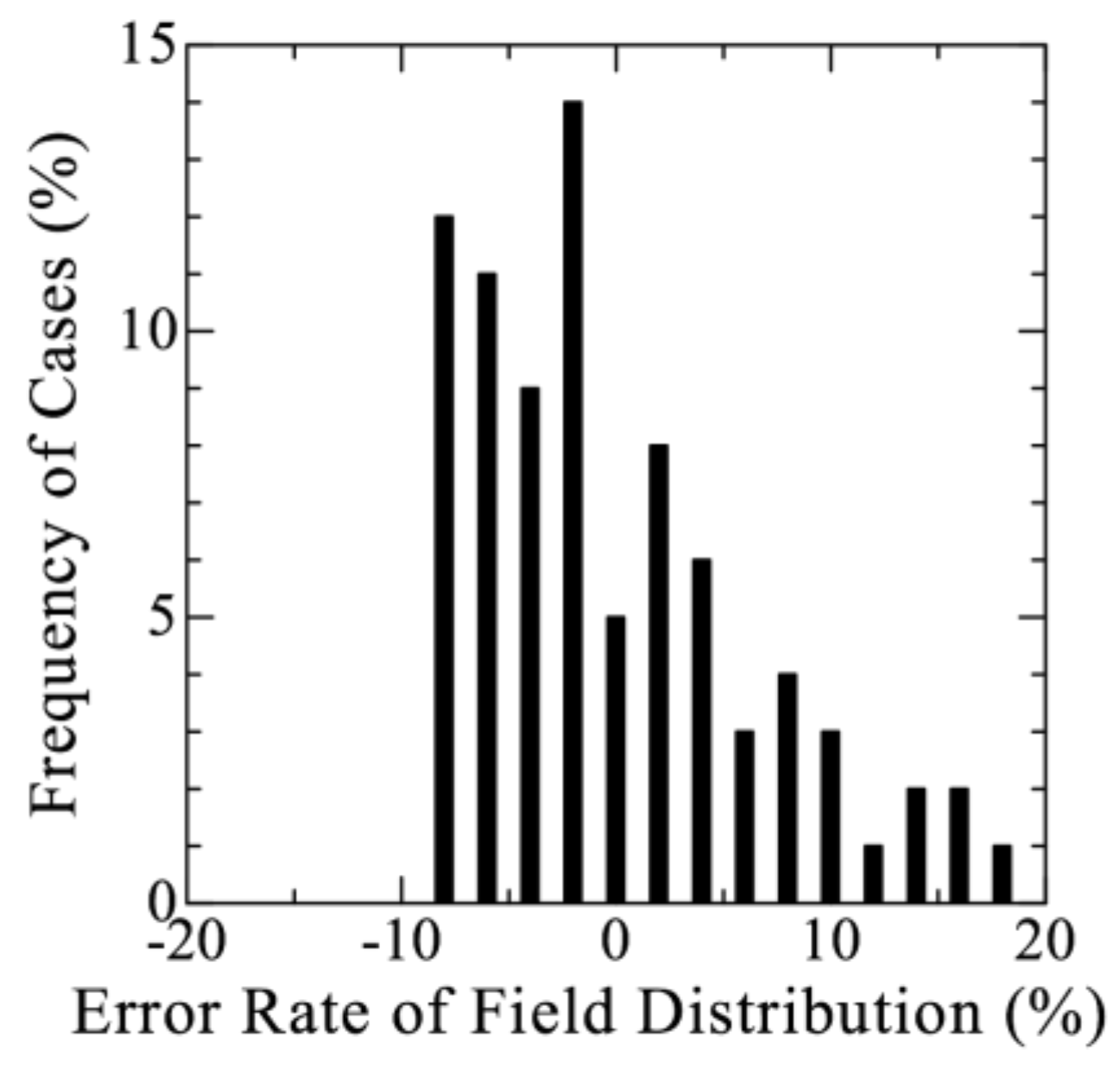

Publisher’s Note: MDPI stays neutral with regard to jurisdictional claims in published maps and institutional affiliations. |
© 2022 by the authors. Licensee MDPI, Basel, Switzerland. This article is an open access article distributed under the terms and conditions of the Creative Commons Attribution (CC BY) license (https://creativecommons.org/licenses/by/4.0/).
Share and Cite
Fuse, N.; Morita, S.; Miyazaki, S.; Takahashi, T.; Hozumi, N. Estimation Accuracy of the Electric Field in Cable Insulation Based on Space Charge Measurement. Energies 2022, 15, 4920. https://doi.org/10.3390/en15134920
Fuse N, Morita S, Miyazaki S, Takahashi T, Hozumi N. Estimation Accuracy of the Electric Field in Cable Insulation Based on Space Charge Measurement. Energies. 2022; 15(13):4920. https://doi.org/10.3390/en15134920
Chicago/Turabian StyleFuse, Norikazu, Shosuke Morita, Satoru Miyazaki, Toshihiro Takahashi, and Naohiro Hozumi. 2022. "Estimation Accuracy of the Electric Field in Cable Insulation Based on Space Charge Measurement" Energies 15, no. 13: 4920. https://doi.org/10.3390/en15134920




